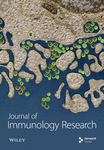The Effects of Enterococcus faecium and Selenium on Methotrexate Treatment in Rat Adjuvant-induced Arthritis
Abstract
The effects of probiotic bacteria Enterococcus faecium (EF) and selenium were studied on methotrexate (MTX) treatment in rats with adjuvant arthritis (AA).
Arthritic rats were preventive treated orally with the following substances: lyophilized EF (15 mg/kg/day, 5 days a week); sodium selenite pentahydrate (SSe, 0.050 mg/kg containing 0.015 mg/kg selenium, 5 days a week); MTX (0.6 mg/kg/week), and their combinations for the period of 50 days from adjuvant application. Levels of serum albumin, serum nitrite/nitrate concentrations, hind paw swelling, arthrogram scores, whole body bone mineral density (BMD), and bone erosions were evaluated as markers of inflammation and destructive changes associated with arthritis.
Long-term preventive treatment with low-dose MTX significantly inhibited the markers of both inflammation and arthritis. EF or SSe when administered singly or in combination had no significant effect on given parameters in arthritic rats. EF but not SSe potentiated the beneficial effects of MTX, which resulted in a more significant reduction of hind paw swelling, arthrogram scores and whole body BMD decrease. EF had a tendency to improve also the effect of MTX on serum albumin and nitrite/nitrate concentrations.
Our results indicate that EF may increase the preventive effect of MTX treatment in rat AA by improving its anti-inflammatory and anti-arthritic effects.




